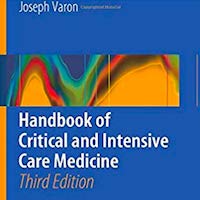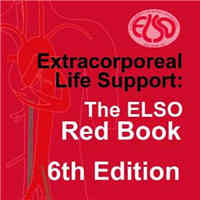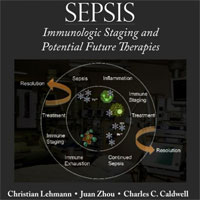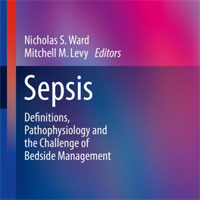Tag: research
Maternal Risk Modeling in Critical Care
Risk prediction models specific to the maternal critical care population was developed. The models compare favorably against general adult ICU risk prediction models in current use within this population. The aim was to... read more
Vitamin Treatment For Sepsis Fails In Large Trial
Hope for an effective and inexpensive treatment for the deadly condition sepsis has dimmed following results of a major new study. Researchers had hoped that a simple treatment involving infusions of vitamin C, vitamin... read more
Finding a New Way to Fight Late-stage Sepsis by Boosting Cells’ Antibacterial Properties
Researchers have developed a way to prop up a struggling immune system to enable its fight against sepsis, a deadly condition resulting from the body's extreme reaction to infection. The scientists used nanotechnology... read more
Lower Glucose Targets Show Improved Mortality in Cardiac Patients
Tighter glucose control while minimizing the risk of severe hypoglycemia is associated with lower mortality among critically ill cardiac patents, new research suggests. Researchers reported in CHEST on the outcomes of... read more
Early Prediction of Sepsis From Clinical Data
Diverse computational approaches predict the onset of sepsis several hours before clinical recognition, but generalizability to different hospital systems remains a challenge. A total of 104 groups from academia and industry... read more
Endogenous Agmatine Metabolism Correlated with the Progression of Sepsis
Supplemental exogenous agmatine could ameliorate the lipopolysaccharide-induced systemic inflammatory responses and multiple organ injuries through the 2 receptor">imidazoline I2 receptor-ribosomal S6 kinase 2-nuclear factor-κB... read more
Intracranial Pressure & Neuromonitoring XVI
This book introduces the latest advances relating to the pathophysiology, biophysics, monitoring and treatment of traumatic brain injury, hydrocephalus, and stroke presented at the 16th International Conference on Intracranial... read more
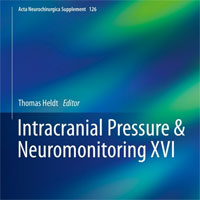
Evaluation of Perioperative Medication Errors and Adverse Drug Events
One in 20 perioperative medication administrations included a medication error (ME) and/or adverse drug event (ADE). More than one third of the MEs led to observed ADEs, and the remaining two thirds had the potential for... read more
Failure of Non-invasive Ventilation in Patients with Acute Lung Injury
A high failure rate of the initial non-invasive positive pressure ventilation (NIPPV) therapy has been observed in medical critically ill patients with acute lung injury (ALI). Unless the underlying shock, metabolic acidosis... read more
Predicting Outcome in Patients with Moderate to Severe TBI Using Electroencephalography
Multifactorial Random Forest models using quantitative electroencephalography (qEEG) features, clinical data, and radiological findings have potential to predict neurological outcome in patients with moderate to severe traumatic... read more
Assessment of Variability in End-of-Life Care Delivery in ICUs in the United States
This study suggests most decedents in the ICU avoid CPR at EOL, have family present at their bedside, and are closely assessed for pain. However, the delivery of EOL care varies widely among units in the United States, including... read more
Hypothermia and Cerebral Ischemia: Mechanisms and Clinical Applications
A comprehensive review of the scientific and clinical studies that have led to the resurgence of interest in hypothermia as a neuroprotective strategy in the treatment of stroke and traumatic brain injury (TBI). Topics... read more
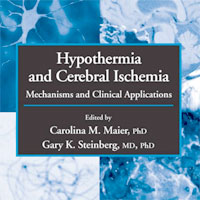
Patient and Family Member-Led Research in the ICU
Patient and family member-led research is a novel research approach that is feasible to conduct and can be used to identify opportunities for improving care. Study participants described shared key experiences in the... read more
Ventilation Rates and Pediatric In-Hospital Cardiac Arrest Survival Outcomes
In this multicenter cohort, ventilation rates exceeding guidelines were common. Among the range of rates delivered, higher rates were associated with improved survival to hospital discharge. Arterial blood pressure and... read more
5-year Study Shows Predominance of Non-Device-Associated Pneumonia
Among more than 160,000 patients admitted to University of North Carolina hospitals during a recent 5-year period, non-device-associated, or ND, pneumonia was implicated in three of every four nosocomial pneumonia cases,... read more
Critical Care Doctors Placed Humans in Suspended Animation For The First Time
Critical care doctors have placed humans in suspended animation for the first time, as part of a trial in the US that aims to make it possible to fix traumatic injuries that would otherwise cause death. Samuel Tisherman,... read more
Probiotics Linked to Bloodstream Infections in ICU Patients
People carry a community of microbes in and on our bodies, and they can have a powerful influence on our physiology in many ways. Probiotics, which are live microbes, are intended to improve human health, and they sometimes... read more
Pilot Study to Assess the Feasibility and Safety of Intermittent Enteral Feeding in Mechanically Ventilated Medical ICU Patients
With the advent of the feeding pump, default enteral nutrition schedules in many medical intensive care units has shifted from intermittent or bolus feeding to continuous feeds. Clinical studies suggest that each of these... read more
Snapshots of Hemodynamics
This new edition reviews recent developments in genetics and molecular biology and new noninvasive measurement techniques that have enabled vast improvements in the measurement and understanding of cardiovascular hemodynamics.... read more
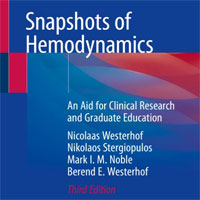
High-Flow Nasal Cannula vs. Noninvasive Ventilation
High-flow conditioned oxygen therapy delivered through nasal cannulae and noninvasive mechanical ventilation (NIV) may reduce the need for reintubation. Therefore, Hernández et al set out to test if high-flow conditioned... read more
Population Enrichment for Critical Care Trials
Enrichment reduces heterogeneity and will enhance the sensitivity of future trials. However, enrichment, even when it identifies more homogenous populations, may not be efficient to deploy in trials or clinical practice. Many... read more
When Patients Die in the ICU, Should Their Family Be Allowed to Watch?
In most ICUs, it's standard practice to send relatives out of the room when a patient codes, but a growing body of research—and one doctor's personal experience—suggests relatives should be allowed to witness the medical... read more




